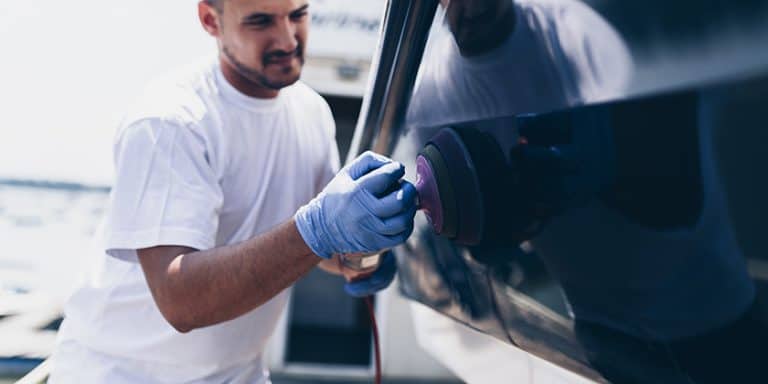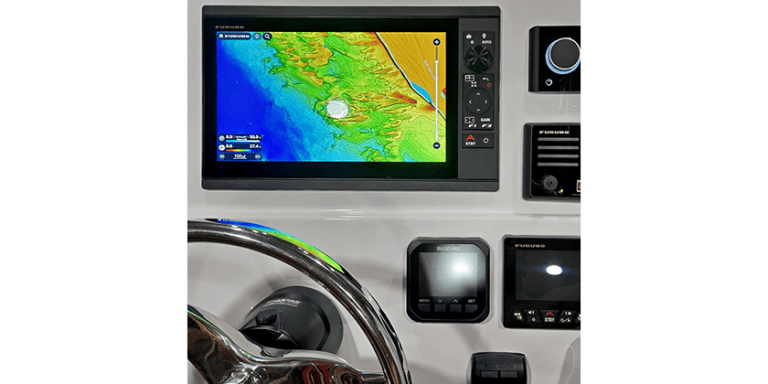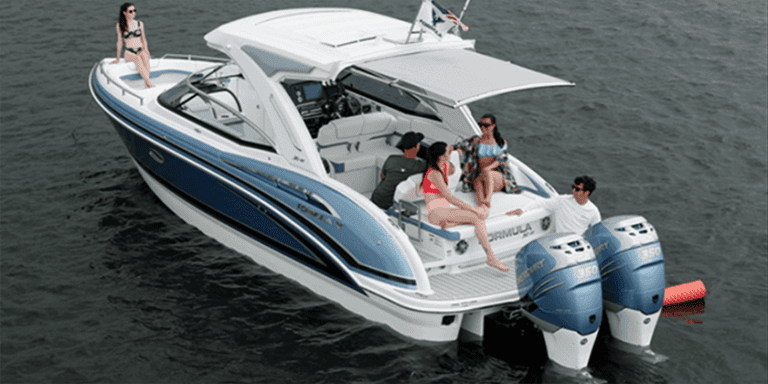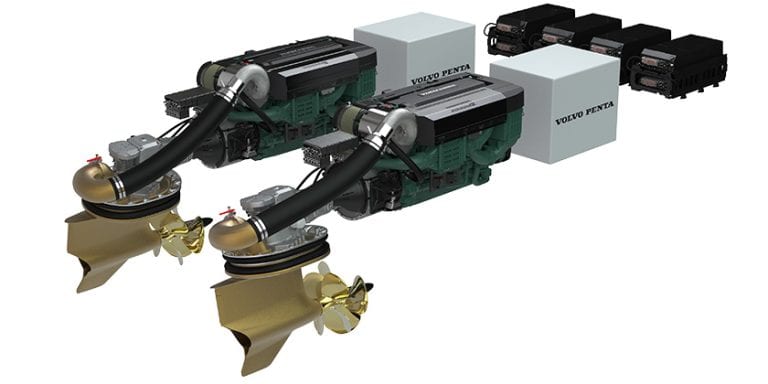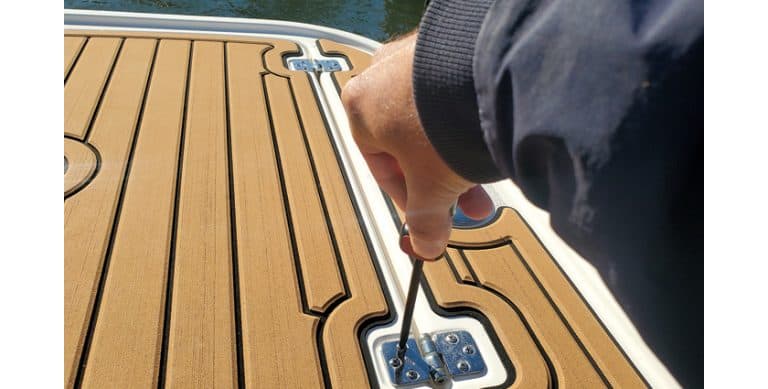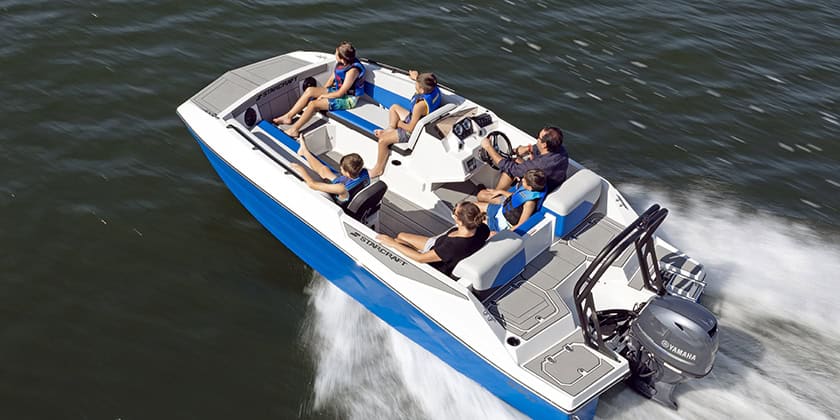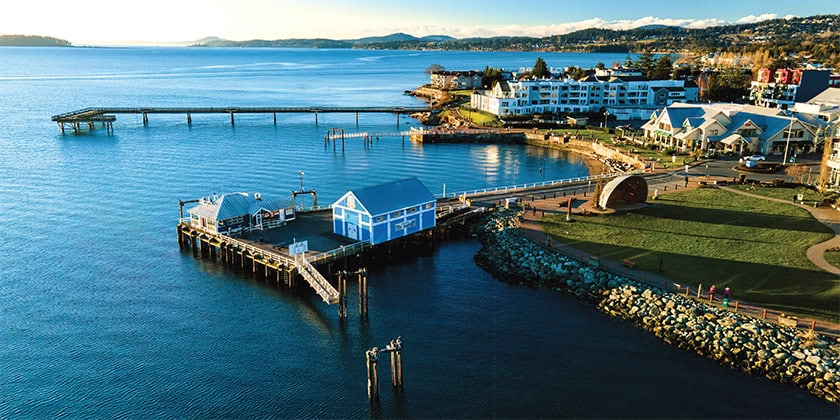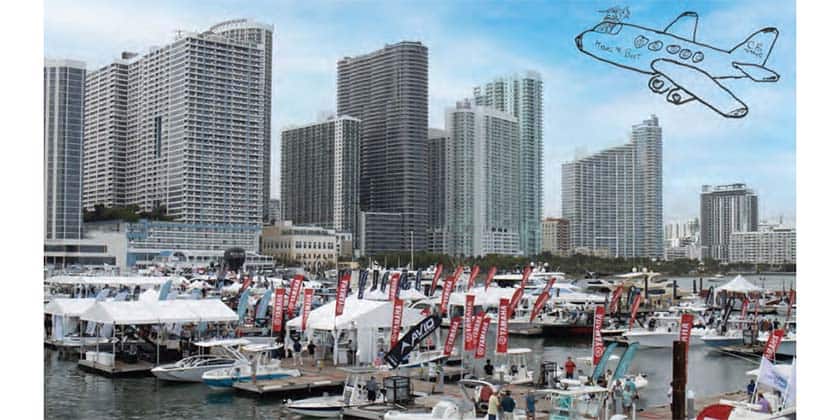Your Compass – The Most Reliable Instrument on Your Boat
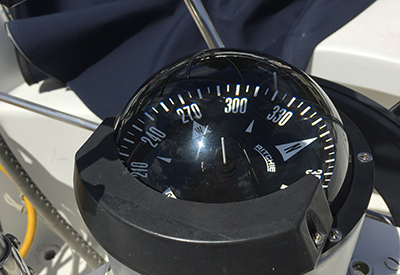
 Deserves occasional care and service
Deserves occasional care and service
By Katherine Stone
Not a hard re-installation – just line up the holes and replace the screws.
I remember vividly my first experience using a chart plotter and navigation system. Deciding that we should try the cruising lifestyle, we purchased an older boat and set out from Hindson’s Marina in Penetanguishene at dawn to sail across Nottawasaga Bay to Thornbury, Ontario for the Canada Day long weekend. It was a beautiful start to the day when we left and motored out of Penetanguishene Bay and rounded the corner, heading toward Christian Island, right into pitch black clouds. The winds picked up, the rain belted down and we were encased in fog. I started to panic as we could no longer see the channel markers indicating the tricky shoals we had to avoid. Out of the mist I hear my husband’s voice calmly saying, “Kate, trust your instruments,” as if I were Luke Skywalker entering the Death Star’s core! I looked down and sure enough, the compass indicated the correct direction and our boat on the chart plotter screen was safely going around the buoy, even though I could not see it.
How on earth did those early Vikings navigate without compasses and chart plotters?
Besides looking for birds and smelling if land were near by, they also looked at the colour of the sea and the way the waves moved and how the wind blew. They also used a sunstone in parallel with a sun compass (sundial) to navigate their ships after dark. Researchers say that the principle behind the sunstone is its unusual property of creating a double refraction of sunlight, even in cloud cover and fog. They would turn the crystal in front of their eye until the darkness of the two shadows were equal. In this manner the sun’s position could be pinpointed with incredible accuracy. This certainly explains why the Vikings ruled the Atlantic Ocean for over 300 years and reached North America without a magnetic compass!
Over 4,000 years ago the Phoenicians navigated using primitive charts and observations of the sun and stars to determine directions. They used the location of particular stars (especially those in Ursa Major) to orient the ship. The pole stars were used because they did not disappear below the horizon and could be seen throughout the night. Using a sextant, cross-staff, astrolabe and quadrant, mariners could determine the latitude by measuring the altitude of the North Star above the horizon. The angle in degrees was the latitude of the ship.
The mariner’s magnetic compass was first invented some 2,000 years ago and were made of lodestone, a naturally magnetized stone of iron. Mariners often found this compass inaccurate because they did not understand the concept of magnetic variation. It was used when the sun as not visible to identify the wind direction. Later compasses were made of iron needles, magnetized by striking them with a lodestone. Mariners also started to keep more detailed records of their voyages and created charts. Considered valuable, they were often kept secret from other mariners, even though they were not very accurate. Dry compasses began appearing around 1300, eventually being replaced in the early 20th century by the liquid-filled magnetic compass.
 After removing the compass from the binnacle for the winter, ensure that the area left bare is securely protected from the elements.
After removing the compass from the binnacle for the winter, ensure that the area left bare is securely protected from the elements.
A compass functions because the magnetism of the Earth attracts the magnetic needle, which draws it to the constantly shifting Magnetic North Pole. The Geographic North pole is static and is located 1,931 kilometers north of the Magnetic pole. This variation between the two is known as magnetic declination, which changes as you move across the globe. Navigators know to always compensate for compass variation when charting their courses. At one time the agonic line (imaginary line where true north and magnetic north align) passed through the Bermuda Triangle, which explains why early ships were lost in this area. The agonic line now falls in the Gulf of Mexico.
While a compass is a great tool for navigation, it doesn’t always point exactly true north. The reason your compass may not “work” by showing north is that it might have been subjected to a magnetic field that has polarized the needle. A compass needle cannot change its polarization on its own, it must be forced to reverse its polarity. To DIY your compass alignment check out the Richie website which gives great directions. https://www.ritchienavigation.com/media/336120/compensation-instructions.pdf. If you’re not so handy, or don’t have the patience, there are many compass dealers who will do it for you.
When all else fails on your boat – your compass will remain your best friend and always guide you home. So, let’s look into how you can give your compass a little TLC to keep it working for years to come. There are only about 3 things that can really go wrong with your compass.
 First, it can be hard to read because of a scratched, cracked dome or contaminated fluid. Always ensure that your compasses are covered when not in use. Bulkhead mounted ones often come with a plastic cover and ones on a binnacle or pedestal should have a soft cover. These can be purchased at your local marine store, or easily made out of outdoor upholstery fabric, using Velcro to fasten it tightly around the compass.
First, it can be hard to read because of a scratched, cracked dome or contaminated fluid. Always ensure that your compasses are covered when not in use. Bulkhead mounted ones often come with a plastic cover and ones on a binnacle or pedestal should have a soft cover. These can be purchased at your local marine store, or easily made out of outdoor upholstery fabric, using Velcro to fasten it tightly around the compass.
Where our repaired compass will sit atop the binnacle.
Second, it can leak, causing a bubble and, if allowed to grow, will interfere with damping of the dial. Although a small bubble will not affect accuracy, it will usually disappear when it is returned to sea level and/or room temperature. If it doesn’t, try placing it in a warm spot, like a sunny window, so the liquid can heat, expand and return to its normal volume. You can also try tilting the bowl until the “filter hole”, found on the side of the bowl, is at the top. Then unscrew the “filler hole” stud/screw and top up with ethyl alcohol, odorless mineral spirits or in a pinch, distilled water. (Compasses made prior to 1950 usually contained a mixture of water and alcohol. More modern ones are now filled with refined mineral spirits, often referred to as compass oil.) To insert the compass oil into the compass, use a large syringe designed to inject epoxy. Screw the stud/screw back into place and then gently rock the compass back and forth to allow all the air to escape. Then let the bowl return to upright. To ensure you are using the correct compass oil, visit Google to check out what type of fluid is in your compass.
Ritchie Navigation experts say that if this is not your cup of tea, then it is well worth taking it to your compass dealer and for about ½ the cost of a new compass getting it serviced. During the winter in Canada is when most compasses develop a bubble, as the fluid contracts, pulling in air. In the summer the fluid expands, creating pressure and forcing fluid to leak out. So removing your compass from the boat in the winter and having it stare at you on your nightstand is a good reminder of the wonderful days of summer that await when the snow thaws.
If the bubble reappears year after year and the dome becomes crazed, you just might have to bite the bullet and have your compass serviced, which is usually more economical than buying a new one.
Finally, it can become “sticky”, when the card is not able to rotate smoothly on its pivot, which is made of hardened steel resting on a jewel bearing. Constant boat movement and engine vibration can eventually cause the wear on the pivot. To check for this problem, tie up to a dock so that the compass will maintain the same heading. Use a wrench or some other large metal object and place it next to the compass. Now, watch the card move. Then take the metal object away and the card should smoothly swing back to its original heading. Then try the wrench on the other side and repeat the test. If it swings erratically or is jerky as it turns, the card is probably worn and should be repaired by a professional compass repair shop.
Most compasses can either be delivered to a repair facility or mailed in for servicing. Make sure you ask about special shipping instructions when contacting the repair shop.
Your old magnetic compass may feel neglected, with all of the other electronic gadgets on your boat these days. Remember that when the power goes down, it will become the most reliable instrument on your vessel. With not a lot of moving parts, it requires very little maintenance. So just keep in mind a few basic rules of thumb to ensure your compass lasts and performs during the lifetime of your boat – keep it covered to protect it from the sun and take it with you in the winter, especially if you spend them in Canada.

